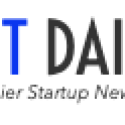Politics
9 Ruthless and Radical Time Management Tips
Published
1 year agoon
By
Drew Simpson
The key to effectively managing your time and schedule? Sometimes, you need radical and even a little ruthless time management tips.
Despite creating a time management plan, you’re probably unable to achieve your goals because you’re too flexible and undemanding. Remember, you only have 24 hours in a day. And it’s not like you can’t magically regain those hours by giving up sleep.
However, many people have difficulty managing their time. For example, when people who suffer from ADHD, depression, or anxiety try to accomplish everything that needs to be done, they are often scattered. In an effort to be more efficient, sometimes they focus on the wrong things or try to accomplish too much.
This being said, let’s take your time management to the next level with these nine creative tips.
1. Disable notifications permanently.
Each day, we are bombarded with emails, texts, news, and social media activity from our devices. In fact, each day, the average U.S. smartphone user receives 46 app push notifications. This eventually results in us losing control over our own agendas and priorities.
We wake up, check our messages, respond to them, then try to accomplish our goals. In the blink of an eye, it’s 6 pm, and you’ve been working hard all day but haven’t accomplished anything.
Why do we do this ourselves? It varies from person to person. Most people keep their smartphones near them from the moment they wake up to the moment they go to sleep, where they can access various compelling information and a constant stream of messages and alerts.
To avoid this, you should disable almost all device alerts besides meeting notifications that help us meet our obligations to others. What if there is an emergency? If someone really needs to contact you, they’ll call or stop by your workplace.
If you really want to be extreme, you could even go back to a flip phone.
2. Schedule a “Mega Day.”
To determine the return on investment (ROI) of time blocking, use a simple formula, says Nate Klemp, PhD., writer, philosopher, and entrepreneur. “The greater amount of time is reserved, the greater the return on your productivity. Give yourself 15 minutes, and you’ll see a small but meaningful improvement. You will experience even greater returns if you set aside an hour or two, as most time-blocking methodologies suggest.”
Klemp continues, “Allow yourself to spend an entire day time-blocked, and you will gain a sense of enlightenment that is productive in nature.”
“This is what I call the Mega Day. It’s a strategy that came out of a period of extreme time scarcity several months ago,” Klemp explains. At this time, Klemp was writing these weekly columns while working in his company and starting a new book. It didn’t work out mathematically. “Not only did I not have enough time, but I also didn’t have the space to think big and bring my highest attention to these projects.”
To solve this problem, Klemp made a deal with himself. “Each week,” he said, “I’m going to reserve one massive day for my highest and best, uninterrupted work.” Each day, from 7 a.m. to 7 p.m., he did not answer his phone, return his emails, or even open his inbox. “As a result, I was given permission to dive into the most important creative and productive tasks that were on my plate head-first.”
During the weeks he described, Klemp had the luxury of developing a set of ideas at the deepest possible level. The result was that he got a week’s worth of work done during these one massive, 12-hour chunks, not just a day’s.
You can make the most of Mega Days by following these tips:
- Make sure your Mega Days are blocked in advance. At least one to two months in advance, Klemp attempts to fill his calendar with Mega Days.
- Don’t be afraid to go ‘off the grid.’ In addition to turning off your notifications, set up an away message on your email.
- Recruit your coworkers and family to help you. Your Mega Day will succeed if you ask for support from those around you. By spending one day every week delivering your best work to the world, you create a community of support.
3. Do it tomorrow.
I’m sure you’re familiar with the quote, “Don’t put off until tomorrow what you can do today.” If so, then this tip might sound completely counterproductive.
“Do it Tomorrow” is credited to Mark Forster, a British time management and organization coach. An introduction to the method can be found in the book “Do It Tomorrow and Other Secrets of Time Management.” Another innovative time management method, Autofocus, along with the book “Get Everything Done and Still Have Time to Play,” was released six years previously.
Do it Tomorrow offers a refined system, “a complete system that will enable almost anyone to complete one day’s work in one day.”
Do it tomorrow’s basic principles.
As part of its foundation, Do It Tomorrow is based on several principles which challenge some conventional time management practices.
The seven principles are:
- Be clear about what you want to accomplish. Identify what you will and will not do very specifically.
- Focus on one thing at a time. Pay full attention to what you are doing.
- Often and little. Rather than a considerable amount of work infrequently, do a little bit at a time.
- Limits must be set. Take a break after each task is completed.
- Lists that are closed. As a result, your work will have a boundary.
- Take steps to reduce random factors. In other words, keep distractions to a minimum.
- Is it a commitment or an interest? Commitment will lead to better results.
4. You should set timers based on your ability to focus.
By setting explicit time limits for how long you work, the Pomodoro time management system encourages people to focus on one task at a time. Francesco Cirillo, the inventor of the technique — used distinctive tomato-like timers that gave it its name.
Cirillo advocated doing timed work for 25 minutes at a time. However, you are not bound by 25 minutes if that time isn’t suitable for you or your circumstances.
What’s more, people can’t break their whole day up into 25-minute chunks. Make sure that the time period matches your attention span instead. In other words, if you can focus for 50 minutes, there is no point in interrupting your flow. Alternatively, if your attention span is 10 minutes, why are you trying to double that if it’s just going to waste your time?
5. Be willing to disappoint others.
Simply put, you need to say no to others’ requests, explains Rob Ashgar in Forbes. Ashgar says, “Sorry, I know you came here looking for practical tips that would be easy to exercise and that wouldn’t let others down. Let me explain: Seeing the wound for long enough makes it clear there is no way a small bandage will suffice.”
Rob Ashgar continues, “You wouldn’t benefit from an extra 12 hours a day if the time fairy waved their wands. It would only leave you sinking deeper into a bigger quagmire because all those bossy and inconsiderate people would feel more entitled than ever to request you attend additional meetings, drop them off at airports, or join committees.”
“You can thwart others’ agendas—and with a little practice, you can do it nicely and with a smile,” Ashgar adds. “Once you’re free to do whatever you want, go wherever you want, and be who you want, you’ll finally be able to live your life to the fullest.”
As hard as it may seem, saying no isn’t that difficult. Ashgar suggests alternatives like:
- “Hmm, I can’t commit until I see what else I have going on that day”
- “I’d love to but”
- “Maybe you should ask Ralph instead; he’s just standing there like a dummy.”
6. Find a body double.
Many adults use body doubling to help them start and finish projects. Essentially, it is an accountability partner who helps you be more productive. Body doubles can be spouses, friends, or coworkers who work concurrently, either in the same room or virtually through video chat.
Keeping someone accountable and checking in with them in the same physical or virtual room can help you to be more productive.
People with ADHD have been using this technique for some time. Why? “The idea is that the presence of another is essentially a gentle reminder to stay on task,” said Billy Roberts, clinical director of Focused Mind ADHD Counseling in Columbus, Ohio, to CNN. Robers continues, “For folks (with) ADHD whose minds tend to wander and get off task, the body double somehow works as an external motivator to stay on task.”
However, people with ADHD aren’t the only ones benefitting from doubling. “As with most ‘coping strategies,’ something that can be helpful for anybody is more central and important for folks with ADHD,” adds J. Russell Ramsay, professor of clinical psychiatry at the University of Pennsylvania’s Perelman School of Medicine and co-director of the university’s ADHD Treatment and Research Program.
7. Decline all meeting invites.
Having been a part of business culture for so long, meetings have become ingrained into our daily lives. However, most meetings are pointless. Every year, some theories believe that there are 24 billion hours are wasted in unproductive meetings.
Moreover, 58% of employees say their meetings last longer than 30 minutes. In addition, 35% of employees report that meetings waste two to five hours of their time each week. This results in an estimated $37 billion in lost productivity per year (also from the zippia.com study).
Furthermore, in the age of hybrid work, meetings are no longer the best way to communicate. In today’s world, asynchronous communication tools, like email, Slack, or Google Drive, are far more effective.
To sum it up, you should consider the following red flags before accepting every meeting invitation you receive:
- There is no set agenda for the meeting
- The meeting doesn’t lead to any decisions or action
- It is not essential that you attend
Informal run-ins, like at lunch, are best if there is no agenda or actionable conclusion. Yes, brainstorming sessions like this are important. However, they are not worthy of discussion at the meeting level.
There is still no good reason to attend a meeting, even if you determine one should occur. To contribute something worthwhile, you must ask yourself if you can do so. You would probably be better off spending your time elsewhere if you don’t.
Finally, consider whether you are a good candidate for the meeting. Often, meetings don’t work with your workload because of your priorities and timelines. In that case, you’ll need to know how to reschedule or decline a meeting.
8. Don’t touch “It” more than once.
Don’t let yourself wait to do things later is another way to be ruthless with your time. Respond to emails that require a response as soon as possible. Whenever you get a bill in the mail, pay it right away. Delete junk mail as soon as you receive it. Take care of these issues when you have time to check your mail.
Also, remember that you shouldn’t be too hard on yourself regarding your working schedule. Make your schedule as ruthless as possible. But don’t forget to schedule some fun time too. Unlike machines, humans cannot work 20 hours a day.
If you want, make a daily schedule of 8 to 10 hours of work. The catch? Don’t forget to schedule breaks in between. It’s also important to spend time with friends, family, and spouses as well. You should also schedule breaks like vacations and weekends. Being ruthless with time and sticking to your schedule will be so much easier if you do that.
9. Place a bet on whether you’ll be able to finish.
The fact that you need to do something and that you will benefit from it isn’t enough motivation for some people. It can feel real when money or social approval is on the line.
To ensure people complete tasks on time, apps like Stickk allow them to wager money. You win if you finish it on time. Failure to cross the finish line costs you cold, hard cash.
Don’t want to bet money? No problem. Have a friend act as your accountability partner to keep track of your progress and give you feedback when you slack off.
FAQs
What is time management?
The process of planning, organizing, and controlling time is called time management. In other words, time management is all about making the most out of your time.
Organizational time management is a crucial part of time management. Time management involves organizing your time and activities in a way that helps you identify and reduce time waste.
To get more organized, people turn to free time management apps.
In general, time management is important for your success at work, but it’s also crucial for your family, friends, hobbies, and other personal commitments.
Why is time management important?
You might wonder what the benefits are of time management if you haven’t used it before. You can use time management skills whether you’re a boss overseeing 100 people or a parent with two kids.
How? Because time management can do the following:
- Relieves stress
- Helps you reach your goals
- Reduces procrastination
- Gives you time to relax, socialize, or practice a hobby
What are some techniques you can use to manage your time?
Time management strategies are different for everyone. When you’re a graduate student, you may manage your time differently than when you’re a working mom. It might be easier for you to remember things if you have a color-coded calendar instead of a written to-do list.
However, are some techniques you should consider if you’re struggling with time management:
Eisenhower Matrix.
Dwight Eisenhower served as a member of the United States Army before becoming president in 1953. In World War II, he served as a commander of the Allied Forces. It was these difficult decisions that led Eisenhower to invent the urgent-important matrix or the Eisenhower matrix.
To create this list, divide your tasks into four quadrants based on important, unimportant, urgent, and not urgent tasks.
Set deadlines for yourself.
Put a deadline on your tasks. You’ll feel motivated to finish the job if you feel like it’s urgent. Consider setting a time limit for less time than you usually need to finish the task to motivate yourself even more.
Make a to-don’t list.
Identify the things you don’t need to do or know will make you less productive. Take a look at your normal workday, and see what tasks make you most productive. Keep yourself accountable by making a list so you only focus on important, productive stuff.
Sort your tasks into groups.
Group similar tasks together and complete them at the same time with batching. By focusing on fewer tasks for longer periods of time, you can switch from similar tasks more efficiently. It might also make it easier to focus because you don’t have to start up and slow down every time you switch between tasks.
Organize your day around your productivity.
Take stock of your energy levels throughout the week and during certain times. Take note of how you feel and how you work. You can use this info to plan your schedule so that your most important or difficult tasks are on your most productive days.
Say no more often.
Take on only what you can handle. As important as it is to help others and to be a team player, it’s also important to assert yourself when you need to. When your own time limits prevent you from helping them, be honest with your coworkers and decline their requests.
Published First on Calendar: Read Here.
Featured Image Credit: Photo by Anete Lusina; Pexels; Thank you!
Calendar
We are Calendar, trying to make the world a much more productive place. Check us out online at https://www.calendar.com.
You may like
-


How carbon removal technology is like a time machine
-


Climate tech is back—and this time, it can’t afford to fail
-


Return to the Office: Trends and Tips to Make You a Success
-


3 Travel Tips for the Female Executive Traveling Solo
-


How AI is Changing Data Management: Embracing the AI-Driven Automation Era
-


Scheduling Time on Your Calendar to Disconnect From Work
Politics
Fintech Kennek raises $12.5M seed round to digitize lending
Published
7 months agoon
10/11/2023By
Drew Simpson
London-based fintech startup Kennek has raised $12.5 million in seed funding to expand its lending operating system.
According to an Oct. 10 tech.eu report, the round was led by HV Capital and included participation from Dutch Founders Fund, AlbionVC, FFVC, Plug & Play Ventures, and Syndicate One. Kennek offers software-as-a-service tools to help non-bank lenders streamline their operations using open banking, open finance, and payments.
The platform aims to automate time-consuming manual tasks and consolidate fragmented data to simplify lending. Xavier De Pauw, founder of Kennek said:
“Until kennek, lenders had to devote countless hours to menial operational tasks and deal with jumbled and hard-coded data – which makes every other part of lending a headache. As former lenders ourselves, we lived and breathed these frustrations, and built kennek to make them a thing of the past.”
The company said the latest funding round was oversubscribed and closed quickly despite the challenging fundraising environment. The new capital will be used to expand Kennek’s engineering team and strengthen its market position in the UK while exploring expansion into other European markets. Barbod Namini, Partner at lead investor HV Capital, commented on the investment:
“Kennek has developed an ambitious and genuinely unique proposition which we think can be the foundation of the entire alternative lending space. […] It is a complicated market and a solution that brings together all information and stakeholders onto a single platform is highly compelling for both lenders & the ecosystem as a whole.”
The fintech lending space has grown rapidly in recent years, but many lenders still rely on legacy systems and manual processes that limit efficiency and scalability. Kennek aims to leverage open banking and data integration to provide lenders with a more streamlined, automated lending experience.
The seed funding will allow the London-based startup to continue developing its platform and expanding its team to meet demand from non-bank lenders looking to digitize operations. Kennek’s focus on the UK and Europe also comes amid rising adoption of open banking and open finance in the regions.
Featured Image Credit: Photo from Kennek.io; Thank you!
Radek Zielinski
Radek Zielinski is an experienced technology and financial journalist with a passion for cybersecurity and futurology.
Politics
Fortune 500’s race for generative AI breakthroughs
Published
7 months agoon
10/11/2023By
Drew Simpson
As excitement around generative AI grows, Fortune 500 companies, including Goldman Sachs, are carefully examining the possible applications of this technology. A recent survey of U.S. executives indicated that 60% believe generative AI will substantially impact their businesses in the long term. However, they anticipate a one to two-year timeframe before implementing their initial solutions. This optimism stems from the potential of generative AI to revolutionize various aspects of businesses, from enhancing customer experiences to optimizing internal processes. In the short term, companies will likely focus on pilot projects and experimentation, gradually integrating generative AI into their operations as they witness its positive influence on efficiency and profitability.
Goldman Sachs’ Cautious Approach to Implementing Generative AI
In a recent interview, Goldman Sachs CIO Marco Argenti revealed that the firm has not yet implemented any generative AI use cases. Instead, the company focuses on experimentation and setting high standards before adopting the technology. Argenti recognized the desire for outcomes in areas like developer and operational efficiency but emphasized ensuring precision before putting experimental AI use cases into production.
According to Argenti, striking the right balance between driving innovation and maintaining accuracy is crucial for successfully integrating generative AI within the firm. Goldman Sachs intends to continue exploring this emerging technology’s potential benefits and applications while diligently assessing risks to ensure it meets the company’s stringent quality standards.
One possible application for Goldman Sachs is in software development, where the company has observed a 20-40% productivity increase during its trials. The goal is for 1,000 developers to utilize generative AI tools by year’s end. However, Argenti emphasized that a well-defined expectation of return on investment is necessary before fully integrating generative AI into production.
To achieve this, the company plans to implement a systematic and strategic approach to adopting generative AI, ensuring that it complements and enhances the skills of its developers. Additionally, Goldman Sachs intends to evaluate the long-term impact of generative AI on their software development processes and the overall quality of the applications being developed.
Goldman Sachs’ approach to AI implementation goes beyond merely executing models. The firm has created a platform encompassing technical, legal, and compliance assessments to filter out improper content and keep track of all interactions. This comprehensive system ensures seamless integration of artificial intelligence in operations while adhering to regulatory standards and maintaining client confidentiality. Moreover, the platform continuously improves and adapts its algorithms, allowing Goldman Sachs to stay at the forefront of technology and offer its clients the most efficient and secure services.
Featured Image Credit: Photo by Google DeepMind; Pexels; Thank you!
Deanna Ritchie
Managing Editor at ReadWrite
Deanna is the Managing Editor at ReadWrite. Previously she worked as the Editor in Chief for Startup Grind and has over 20+ years of experience in content management and content development.
Politics
UK seizes web3 opportunity simplifying crypto regulations
Published
7 months agoon
10/10/2023By
Drew Simpson
As Web3 companies increasingly consider leaving the United States due to regulatory ambiguity, the United Kingdom must simplify its cryptocurrency regulations to attract these businesses. The conservative think tank Policy Exchange recently released a report detailing ten suggestions for improving Web3 regulation in the country. Among the recommendations are reducing liability for token holders in decentralized autonomous organizations (DAOs) and encouraging the Financial Conduct Authority (FCA) to adopt alternative Know Your Customer (KYC) methodologies, such as digital identities and blockchain analytics tools. These suggestions aim to position the UK as a hub for Web3 innovation and attract blockchain-based businesses looking for a more conducive regulatory environment.
Streamlining Cryptocurrency Regulations for Innovation
To make it easier for emerging Web3 companies to navigate existing legal frameworks and contribute to the UK’s digital economy growth, the government must streamline cryptocurrency regulations and adopt forward-looking approaches. By making the regulatory landscape clear and straightforward, the UK can create an environment that fosters innovation, growth, and competitiveness in the global fintech industry.
The Policy Exchange report also recommends not weakening self-hosted wallets or treating proof-of-stake (PoS) services as financial services. This approach aims to protect the fundamental principles of decentralization and user autonomy while strongly emphasizing security and regulatory compliance. By doing so, the UK can nurture an environment that encourages innovation and the continued growth of blockchain technology.
Despite recent strict measures by UK authorities, such as His Majesty’s Treasury and the FCA, toward the digital assets sector, the proposed changes in the Policy Exchange report strive to make the UK a more attractive location for Web3 enterprises. By adopting these suggestions, the UK can demonstrate its commitment to fostering innovation in the rapidly evolving blockchain and cryptocurrency industries while ensuring a robust and transparent regulatory environment.
The ongoing uncertainty surrounding cryptocurrency regulations in various countries has prompted Web3 companies to explore alternative jurisdictions with more precise legal frameworks. As the United States grapples with regulatory ambiguity, the United Kingdom can position itself as a hub for Web3 innovation by simplifying and streamlining its cryptocurrency regulations.
Featured Image Credit: Photo by Jonathan Borba; Pexels; Thank you!
Deanna Ritchie
Managing Editor at ReadWrite
Deanna is the Managing Editor at ReadWrite. Previously she worked as the Editor in Chief for Startup Grind and has over 20+ years of experience in content management and content development.
